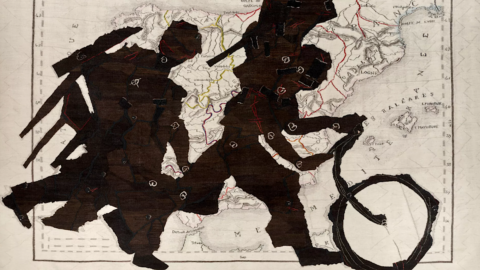Carnivorous plants are ready to… eat the Muse. In fact, from 6 April to 1 May the tropical greenhouse of the Trento museum will host some of the most curious and unusual plants of the vegetable kingdom which have always aroused interest and wonder. They are plants of various types which however have a common denominator, which has always fascinated scholars and the curious: they have transformed part or all of their leaves into real traps, capable of capturing and slowly digesting insects and, in some cases, even small mammals. This strategy was developed to make up for the lack of nitrogenous nutrients, which are very scarce in wetlands and marshes where - usually - these species are found.
The Muse has reproduced their habitat and for about three weeks visitors will be able to observe many kinds of carnivorous plants – from the smallest of a few cm to the largest that can even reach 2 m in height – and understand how the different types of traps work, with a particular focus on the genus Nepenthes, which includes between 70 and 100 species originating from Tropical Asia of which the museum houses one of the richest European collections.
The traps of carnivorous plants are of various types and can function in different ways: for example, they can be sorts of "fall pits" (ascidians) as in Sarracenia where the leaves constitute the trap for catching the preys. The pitcher has the shape of a long vertical tube with, at the upper end, an operculum which partially covers the opening and acts as a lid. The insects are attracted to the opening of the trap from the operculum thanks to particular colors and smells and to the nectar found in the pitcher; once inside, due to the waxy walls, they fall towards the bottom where they get stuck and are digested and absorbed.
In Nepentes, the leaf instead develops the pit as a terminal appendage of the leaf, while in Drosera and Pinguicula the entire leaf can transform into a viscous and adhesive surface. In the genus Dionea we can identify a real "small prison" made up of a snap trap created thanks to rapid movements due to variations in the hydration of some basal cells.
The tropical greenhouse: Udzungwa, an Afromontane rainforest
With an area of 600 square meters, the tropical greenhouse recreates at MUSE a strip of the rainforest of the Udzungwa Mountains, a center of diversity and endemism of Tropical East Africa in Tanzania. Crossing the threshold of the greenhouse, the visitor is welcomed by the warm and humid embrace of the tropics, entering the pristine forests of tropical Africa, between waterfalls and vertical walls, between swirling waters and a luxuriant forest. The itinerary starts from the Kilombero valley to continue in the submontane humid forest, encountering a kaleidoscopic diversity of shapes and colors belonging to unique plants and animals.
The greenhouse is also home to animals, birds such as Livingstone's Turaco (Tauraco livingtonii), and reptiles such as Derema's chameleon (Trioceros deremensis) and pygmy chameleons (Ramphholeon acuminatus and others).
The setting of the greenhouse aims to make people reflect on the issues of globality and sustainability, illustrating research and international cooperation projects for the protection of forests and the fight against poverty, inviting the visitor and actively supporting them.





